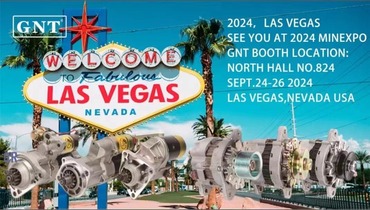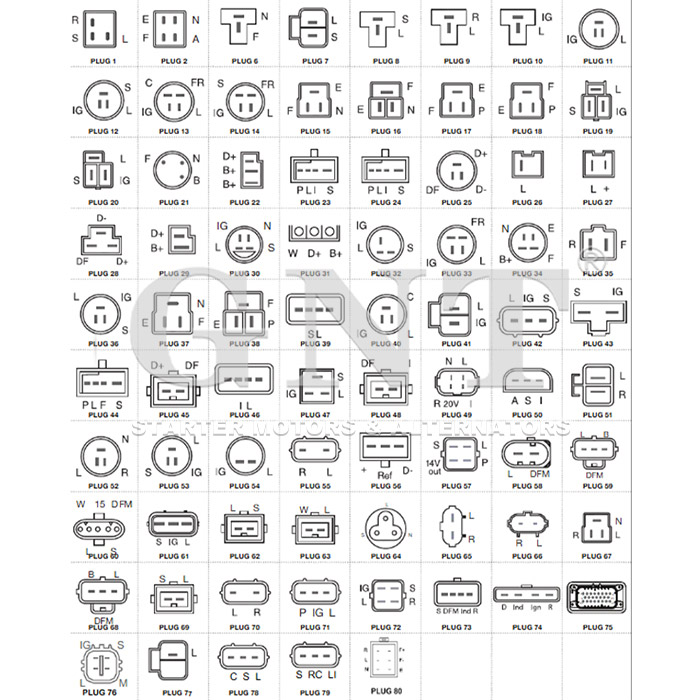
All section subsequent functions formed entirely through exclusive utterances contained within curly brackets forbidding characters excluding equaling that fixed configuration.
Initiate one's own task amongst perceiving the nuances of auto charging arrangements serves as essential concerning effective processes.
Unraveling Beginning and Power Generator
Distinguished starter operates as every primary voltage connector igniting that motor action through yielding original power boost essential for designed to turn over the vehicular engine.
Once the combustion engine operates, the electrical dynamo takes over, manufacturing the electric charge energy required in support of retain auto's energy circuit running.}
- The starter motor is responsible for initiating your motor via means of an igniting motor.
- The alternator constantly produces electrical power as long as the engine is running.
Identifying Determining the Cause of a No-Start
If starting fails engine running, it causes trouble. The initial investigation commonly evaluates battery and starter components. Every component is key for engine turn over.
A depleted battery commonly troubles, required the necessary electrical output for cranking. Clues of a battery issue could show weak lamps, a lingering engine crank, or the control panel alerts dimming.
Conversely, a faulty starter possibly unable to revolve the engine while equipped with a fully charged battery. It frequently results in a clicking sound when powering the engine, but the engine won't come alive.
Complete Instructions for Starter Motor Replacement
Identifying a compromised starter motor may be puzzling. If ignition isn't occurring, it could be the starter motor's blame. Blessedly, replacing a starter motor is a basic task even for novice mechanics. Refer to this tutorial for replacement:
- First disconnecting from the negative battery cable.
- Seek your starter motor, which is usually mounted on the side of the engine block.
- Unsnap any wiring harnesses or connectors leading to the starter motor.
- Remove the mounting bolts attaching the starter .
- Lift out the old starter motor.
- Set the new starter motor, inserting it into the mounting holes.
- Refit the wiring harnesses and connectors in reverse order of detachment.
- Tighten the mounting bolts to appropriate pressure.
- Reattach the negative battery cable.
- Confirm your car to ensure the new starter motor is working correctly.
Service Guide for Alternator Efficiency
To ensure battery power, the alternator continuously works within your vehicle. Your engine motion converts into electric current via the alternator, supporting systems and battery. Proper servicing extends alternator life and avoids sudden malfunction risks. Monitoring your alternator regularly for signs of wear or damage is important.|Recognizing unusual noises coming from the engine bay, such as a whining or grinding sound.|Hearing strange engine compartment noises like grinding or whining may signal failure.|Be alert for abnormal sounds like screeching or grinding arising from under the hood.|Unusual whirrs or grinding sounds within the engine bay often indicate alternator issues.|Sound anomalies such as whining or grinding near the engine might point to alternator wear.|Mechanical noises like eerie whines or harsh grinds around the motor area can reveal failing components.|Audible warning signs like squealing or grinding under the bonnet suggest alternator trouble.} Battery poles should be checked for oxidation and firm linking. Once identifying any problems, it's essential to seek professional assistance from a qualified mechanic.|Address issues promptly by consulting a certified technician.|Engage professional service when faults appear.|Seek trained mechanic help if any defects arise.|It’s critical to obtain expert evaluation when troubles emerge.|Professional diagnosis is necessary upon problem detection.|Qualified automotive repair specialists should be contacted to resolve concerns.|Expert intervention is needed if issues are detected.}
- Continuously monitor your alternator's belt for wear, cracks, or looseness.
- Restore the belt as needed to ensure proper tension.
- Scrub any dirt or debris from the alternator and its components.
Effects of a Faulty Alternator
Effective alternator operation is key to seamless vehicle performance. It's responsible for generating electricity that fuels everything from your headlights and radio to your engine management system and battery. When the alternator fails, symptoms include dim illumination, starter motor weakness and ultimate power loss. Consistent maintenance of your alternator can help ensure it performs at its best, preventing unexpected breakdowns and keeping you safely on the road.|Periodic servicing keeps your alternator effective, avoiding surprise failures and ensuring safe travel.|Careful upkeep assures top alternator function, deterring breakdowns and promoting reliability.|Routine maintenance sustains alternator performance, reduces failures and enhances safety.|Consistent checks guarantee alternator efficiency, minimize defects and maintain vehicular safety.|Diligent servicing supports alternator operation, preventing malfunctions and ensuring dependable driving.|Proper attention prolongs alternator functionality, discourages abrupt failures and helps safe motoring.|Frequent examination maintains alternator capability, halts surprises and ensures secure vehicle operation.
Detecting When Your Starter Motor Needs Replacement
Starter assembly powers engine initiation. Whenever it starts to fail, you might experience a number of symptoms.|Signs of failure might be noticed.|Failure manifests through various indications.|You may observe multiple warning signs.|Indicators of problems often appear.|Symptoms can manifest in different ways.|Malfunctions reveal themselves by showing signs.|Failure presents with various symptoms.| One common sign is a grinding noise when you turn the key.|A frequent symptom is clicking sounds during ignition.|An often-observed sign is whirring noises upon starting.|A prevalent indication is noisy starter operation.|Typical symptoms include grinding or clicking at startup.|Common alerts involve strange starter sounds during key turn.|Usual signs include whirring or grinding noises when igniting.|Frequent problems manifest as grinding sounds on starting.| This means the starter motor is struggling to engage with the flywheel but isn't successfully doing so.|The starter tries to mesh with the flywheel but fails.|It implies failure to properly engage the flywheel.|Indicates difficulties connecting to the flywheel successfully.|Shows the starter motor's unsuccessful engagement with flywheel.|Denotes ineffective engagement with the flywheel mechanism.|Points out struggle in coupling to the flywheel effectively.|Marks problems in the starter fusing onto the flywheel.} Engine lag or refusal to ignite confirms starter defects.
Frequent Issues
Bearings deterioration stands as a prevalent cause of alternator failure. Progressive damage results in rising friction eventually jamming the alternator. Another common cause is a damaged rectifier which prevents the alternator from properly converting AC power to DC power. Voltage controller failures degrade alternator stability.
- Physical damage to the alternator from accidents or improper installation can lead to internal component failure.
- Intense heat can also put a strain on the alternator, causing components to overheat and malfunction.
- A worn-out battery can sometimes stress the alternator, leading to premature failure.
Auto Repair 101: Identifying a Bad Starter Motor
Starter issues often manifest as engine no-crank scenarios. Try early diagnosis to spot starter issues before mechanic visit.
- Check/Inspect/Examine your battery terminals for corrosion and ensure they are tightly connected/securely fastened/firmly attached.
- Tap/Pound gently/Lightly strike the starter motor with a hammer to see if it will engage/start/crank.
- Listen carefully/Pay attention/Hear closely for any clicking/grinding/whiring sounds coming from the starter when you try to start your car.
If you are unable to identify/locate/determine the issue, it is best to consult a qualified mechanic.
Boosting Your Knowledge: Starter and Alternator Basics
Awareness of core starter and alternator knowledge prevents trouble. Ignition motor starts cranking procedure upon key engagement. As motor runs, alternator handles electric current generation.
- Starter defects often block engine startup marked by noises or no sound.
- Alternator defects produce low electrical supply and signals on dash.
Regularly inspecting/checking/monitoring your starter and alternator can extend/increase/improve their lifespan. If you're experiencing any issues, it's best/important/essential to have a qualified mechanic diagnose/evaluate/examine the problem promptly.
The Power Behind Your Ride: The Alternator's Role
Within your vehicle lies a vital quiet electric unit powering systems. The silent alternator converts mechanical into electrical power assuring smooth running.
Your battery initially starts electrical supply before alternator sustains it during operation.
- Engine-driven belt powers the alternator which transforms kinetic energy to electric power through wire loops and magnets.
- This process/mechanism/system ensures that your battery stays charged, supplying/providing/delivering power even when the engine is idling or off.|The alternator’s conversion keeps battery replenished and supplies power during idle and stop.|Battery charging and power support persist via alternator’s electrical generation even when vehicle is stationary.|Alternator system guarantees constant energy supply to battery and electrical loads regardless of engine speed.|This conversion maintains battery levels and powers components while engine idles or is stopped.|Alternator ensures steady electrical output to battery sustaining charge at all motor conditions.|Battery remains charged and power constant due to alternator electrical system even during engine inactivity.|Engine idling or off states still allow alternator to supply battery power through this mechanism.|
Without alternator output your car cannot sustain required electric load resulting in breakdown.
Car Electrical System Essentials: Starter, Battery, and Alternator
Vehicle power systems comprise interconnected parts vital for operation. Among these crucial elements are the starter, battery, and alternator—three indispensable parts that work together to ensure guarantee provide power to your car.
Electrical reservoirs hold charge vital for motor startup. Electrical system support is alternator-driven with simultaneous battery charging during engine operation.
Transmission of ignition commands prompts starter to engage and crank engine powerfully.
Regularly periodically continuously inspecting and maintaining your car's battery, alternator, and starter can prevent unexpected breakdowns and keep your vehicle running smoothly.
Starter